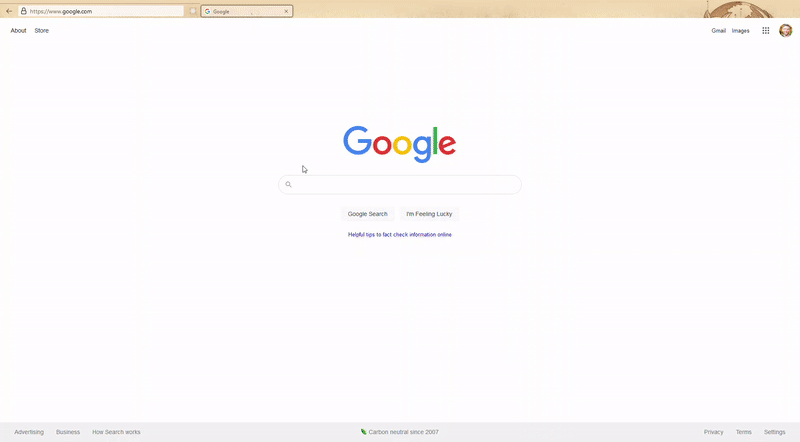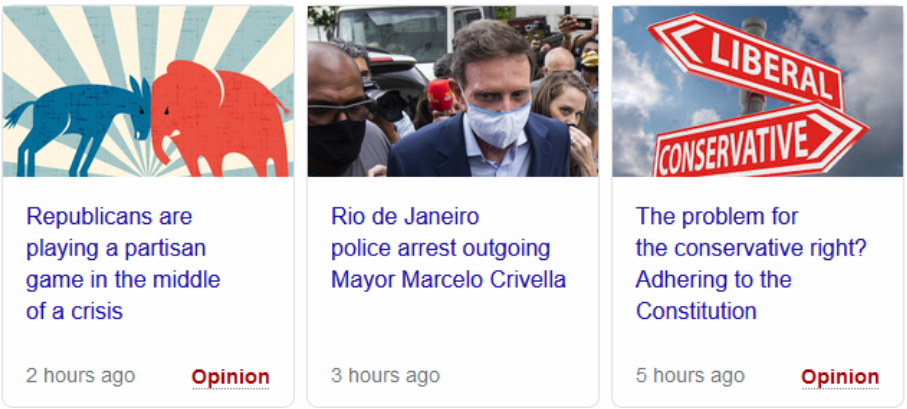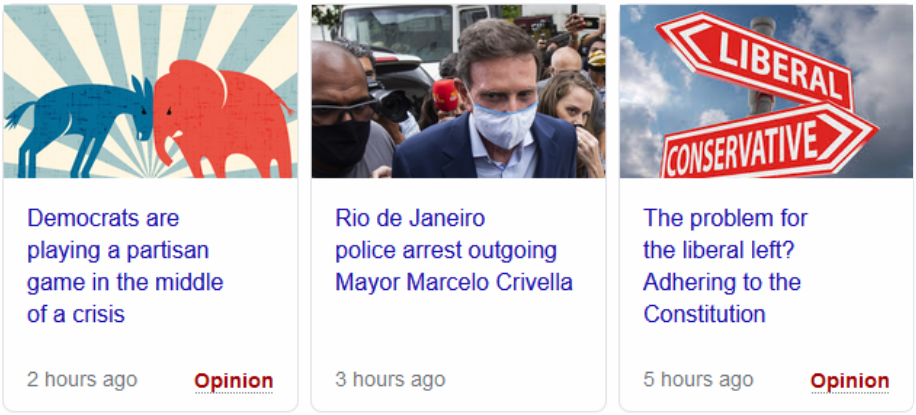This paper grew out of the first of the two studies in my dissertation.
Clearly indicating whether an article is an opinion piece has been a cornerstone of good journalism for decades, but this critical piece of information has often been missing from search engines and social media.
I hypothesized that if search engines were to clearly label which articles were opinion, they would improve the perceived credibility of news sites, and thereby improve trust in the news media as a whole – very important for healthy democracies. (Granted, bias is not a monolithic thing, and many news organizations exhibit bias even in their factual reporting).
I presented participants with an imitation Google search result. This result contained four pages of three story cards each (example of one page below). Participants were either shown a feed with opinion labels:
Or without:
And the headlines were either biased toward the political-left:
Or the political-right:
Finally, I also randomized the news source: CNN or Fox News, or no brand.


After running the studies, recruiting 389 participants, and collecting and cleaning the data, I was ready to begin my analysis using MANOVA/ANCOVA, multiple regression and structural equation modeling. Here are my main findings:
- Opinion labels significantly increased how credible participants found news brands to be.

- The reason why perceived credibility went up in study 1 was for the reason I hypothesized: opinion labels helped participants distinguish news from opinion.

- This finding was consistent across political identity (liberals + Democrats v conservatives + Republicans), news source (Fox v. CNN), age and gender, etc.

Andrew Otis (2022). The effects of transparency cues on news source credibility online: An investigation of ‘opinion labels.’ Journalism. 25 (1): 198-217. https://doi.org/10.1177/14648849221129001.




